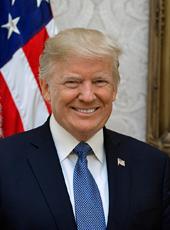
Press Release - How the Trump Administration is Advancing Efficient Federal Operations
Council on Environmental Quality
By: Mary B. Neumayr and Charlotte Skidmore
Today, the Council on Environmental Quality released the annual update on agency performance in meeting the goals of President Trump's Executive Order 13834 on Efficient Federal Operations. A priority of this Administration is the efficient management of Federal operations to meet statutory requirements established by Congress in a streamlined, cost-effective manner that supports agencies' missions and advances environmental protection. Despite an incredibly diverse set of Federal government operations, whether it's the Department of Defense, which ensures our nation's security, or the Smithsonian Institution, which protects our nation's priceless art and heritage, all Federal agencies are uniquely contributing to Federal sustainability goals and making substantial progress in carrying out their shared obligations as good stewards of the environment.
Fiscal year 2019 data, published today on sustainability.gov, demonstrates that agencies continued to improve environmental performance in the past year and made government-wide progress, reducing building energy use by more than 641 billion Btu and water consumption by more than 175 million gallons, increasing the total value of sustainable acquisitions, and reducing greenhouse gas emissions from Federal operations for the third year in a row. The Federal Government also exceeded renewable energy requirements with 8.6 percent of electricity consumed coming from renewable qualifying sources as defined in the Energy Policy Act of 2005.
Contributing to each of these improvements is the substantial progress made in fiscal year 2019 in sustainable buildings, with an increase of 11 million square feet – for a total of 207 million square feet– in the Federal portfolio. Sustainable buildings are those that are constructed and operated to reduce energy, water, and material resource use; improve indoor environmental quality; reduce negative impacts on the environment; reduce the environmental and energy impacts of transportation; and consider the indoor and outdoor effects of the building on human health and the environment.
An example is the Department of the Interior's Genoa National Fish Hatchery and Great River Road Interpretive Center in Genoa, Wisconsin. This high-performance sustainable building has achieved energy performance 62 percent better than an average building by implementing numerous innovative energy efficient strategies. In addition, implementation of new, water efficient technologies conserve about 36,900 gallons of potable water annually.
Federal agencies have also made substantial progress in reducing energy use, with the lowest total energy use on record and the second lowest building energy use per square foot since 2003. Sixteen agencies have surpassed the 30 percent statutory energy reduction requirement, and agencies continue to demonstrate improvements over last year, such as the Department of Commerce, which reduced its energy use per square foot by 6.9 percent in one year, in large part through an innovative energy efficiency project at the National Institute of Technology campus in Gaithersburg, Maryland, that included the installation of a new Combined Heat and Power Plant and a five mega-watt solar array.
NASA's Glenn Research Center also reduced its energy use at Lewis Field and Plum Brook Station, with an innovative project that implements energy conservation measures to improve heating, ventilation, and air conditioning; lighting; and potable water systems. The project is saving 61.8 billion Btu of energy and 7.2 million gallons of water annually, and in the first year, the estimated energy, water, and maintenance cost savings totaled $1.2 million.
These examples show that despite a wide variety of missions and operational requirements, agencies are achieving, and in many cases far exceeding, sustainability goals. Through all the hard work by Federal agencies in meeting President Trump's Executive Order, we are not only conserving resources, but saving taxpayer dollars, improving agency resilience to meet their missions, and continuing to serve the American people.
Donald J. Trump, Press Release - How the Trump Administration is Advancing Efficient Federal Operations Online by Gerhard Peters and John T. Woolley, The American Presidency Project https://www.presidency.ucsb.edu/node/342065
